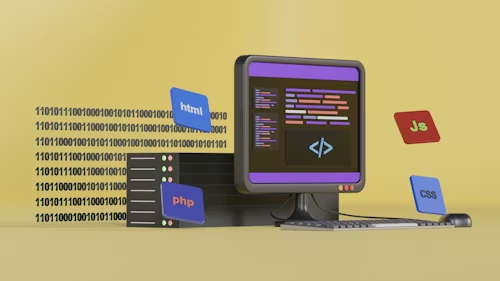In today’s technology-driven world, equipping children with essential STEM (Science, Technology, Engineering, and Mathematics) skills is more important than ever. One of the most engaging and educational ways to do this is through Robotics Classes. Robotics classes provide children with hands-on learning experiences that encourage creativity, logical thinking, and problem-solving—all while making learning fun.
What is Robotics for Kids?
Robotics for kids refers to educational programs that introduce children to the basics of robotics, programming, and engineering concepts. Unlike traditional classroom learning, robotics education is interactive. Children work with real-life robotic kits, sensors, and coding platforms to create functioning machines. These experiences help kids understand how technology works while fostering critical thinking skills.
Benefits of Robotics for Children
Enrolling children in robotics programs provides numerous benefits, both academically and personally. Some of the key advantages include:
1. Enhances Problem-Solving Skills
Robotics projects often involve challenges that require trial-and-error thinking. Children learn to identify problems, test solutions, and make adjustments. This process develops resilience, patience, and a structured approach to problem-solving, skills that are invaluable in everyday life.
2. Boosts Creativity
Creating and coding robots gives children the opportunity to explore their inventive side. Whether designing unique robot models or creating innovative ways for robots to complete tasks, kids learn to think outside the box. These creative skills translate into other areas of learning, including art, science, and design.
3. Encourages Teamwork and Collaboration
Many robotics programs involve group projects. Children learn to work together, share ideas, delegate tasks, and communicate effectively. These teamwork skills are essential for success in school, work, and social interactions.
4. Introduces Coding and Programming
Programming is a vital part of robotics education. Children learn to write code that controls their robots’ movements and actions. Early exposure to coding helps kids develop computational thinking and prepares them for future careers in technology-related fields.
5. Develops Fine Motor and Technical Skills
Handling robot parts, assembling kits, and connecting circuits improves fine motor skills. Additionally, children gain hands-on experience with technical tools and components, giving them confidence in their ability to work with technology.
Age-Appropriate Robotics Learning
Robotics programs are designed for different age groups, ensuring that learning is developmentally appropriate.
- Ages 5–7: Introduction to basic concepts using simple building blocks, sensors, and drag-and-drop coding platforms. Focus is on play-based learning.
- Ages 8–12: Intermediate level with more complex robots and programming tasks. Kids learn problem-solving through guided projects.
- Ages 13+: Advanced robotics and programming challenges. Teens explore real-world applications, including AI, automation, and engineering principles.
Types of Robotics Programs for Kids
Robotics education can take various forms depending on the goals of the program:
- Hands-on Robotics Kits: Children build robots from scratch using modular kits that include motors, sensors, and microcontrollers.
- Coding-Focused Robotics: Programs emphasize programming skills, allowing kids to control robots through software.
- Competition-Based Robotics: Children participate in contests where they design, build, and program robots to complete specific challenges.
- After-School and Summer Camps: Structured learning experiences that provide consistent exposure to robotics and STEM concepts.
Choosing the Right Robotics Program
Selecting the best robotics program for your child requires consideration of several factors:
- Curriculum Quality: Ensure the program provides a structured learning path that balances theory, hands-on projects, and creative problem-solving.
- Instructor Expertise: Experienced instructors make learning engaging and provide guidance on challenging concepts.
- Age Appropriateness: The program should match your child’s developmental stage and interests.
- Resources and Tools: High-quality robotic kits, coding platforms, and support materials enhance the learning experience.
- Opportunities for Growth: Programs that offer advanced challenges or competitions encourage continuous learning.
Long-Term Impact of Robotics Education
Children who engage in robotics learning early benefit in numerous ways. Beyond STEM knowledge, they develop soft skills like teamwork, time management, and adaptability. Exposure to robotics also fosters an interest in science, technology, engineering, and mathematics, laying a foundation for future careers in innovative industries.
Furthermore, robotics education nurtures curiosity and self-confidence. When children see their creations move, complete tasks, or solve problems, they gain a sense of accomplishment and motivation to explore more advanced concepts.
Fun Learning Through Play
The greatest appeal of robotics for kids lies in its playful approach to education. Unlike traditional methods, robotics combines fun with learning. Children experiment, explore, and discover principles of physics, coding, and engineering without feeling like they are in a classroom. This method encourages lifelong learning and a positive attitude toward challenges.
How to Get Started
To get started with robotics for kids:
- Research Local Programs: Look for reputable robotics classes in your area, such as those offered at educational centers, community centers, or online platforms.
- Choose Age-Appropriate Kits: Kits should match your child’s skill level and learning goals.
- Encourage Curiosity at Home: Provide opportunities for experimentation, creativity, and independent problem-solving.
- Set Goals and Celebrate Achievements: Celebrate your child’s milestones, whether building a robot or coding a new function.
Conclusion
Robotics for kids is more than just a hobby; it’s an educational journey that combines fun, creativity, and learning. By engaging with robotics, children develop essential skills that prepare them for a future shaped by technology. From problem-solving and coding to teamwork and innovation, the benefits of robotics are limitless.
Introducing your child to robotics today is a step toward fostering curiosity, critical thinking, and confidence—skills that will serve them well throughout life.
